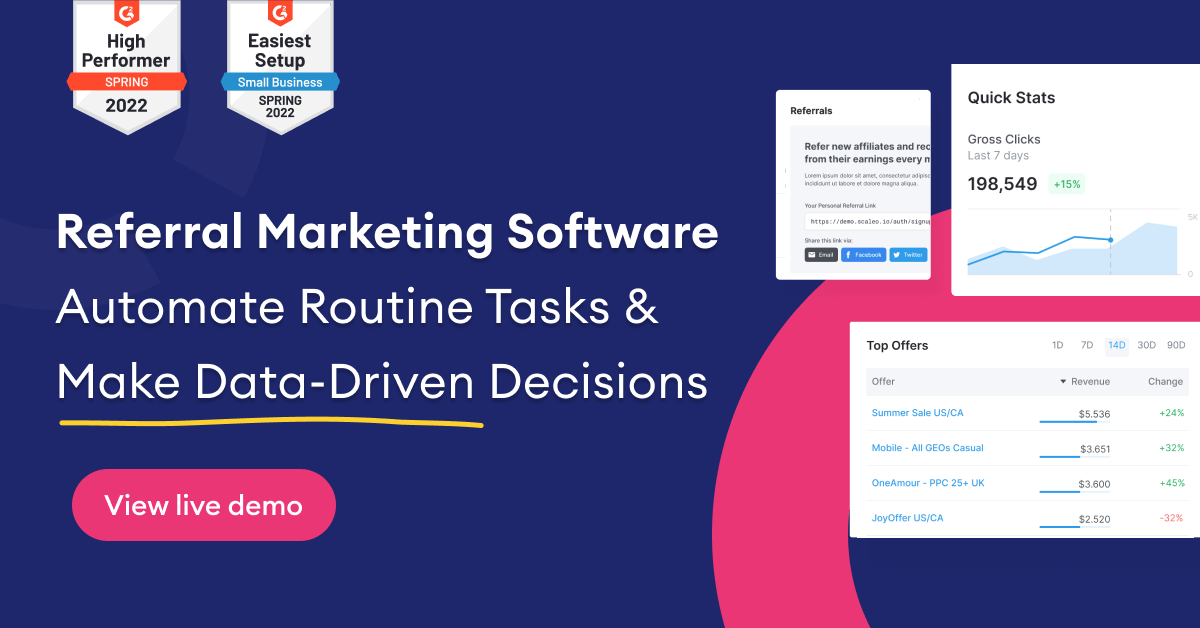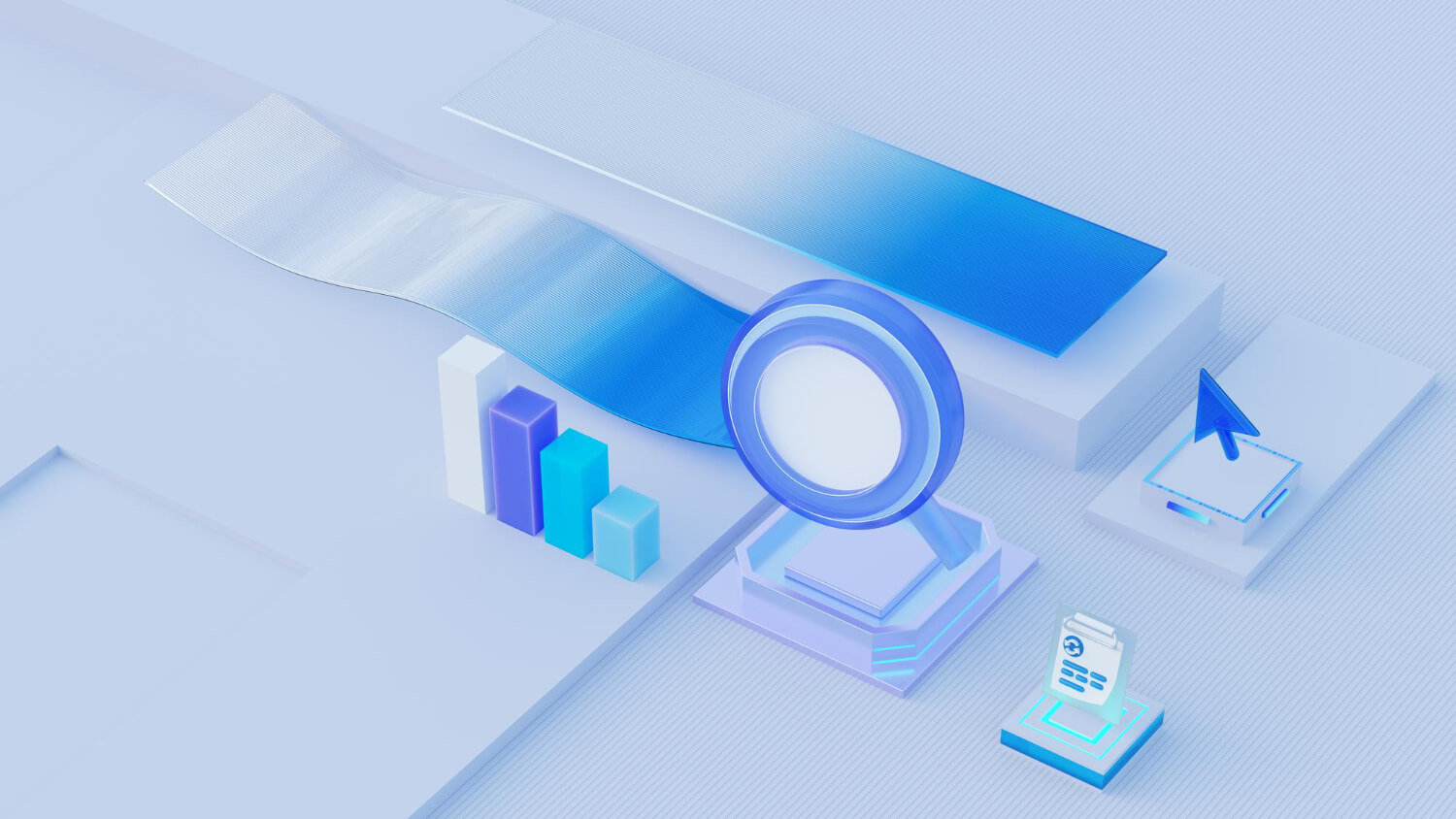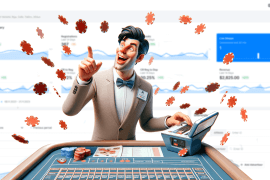Partner marketing has emerged as an innovative way to drive high-quality customer acquisition in a cost-efficient manner. By collaborating with strategic partners who have access to your target audience, you can tap into new customer bases and scale your customer acquisition efforts.
As a marketer, you know that acquiring new customers is essential for business growth. However, the costs of traditional marketing channels like advertising continue to rise while their effectiveness declines.
The key to success with partner marketing is taking a data-driven approach. By analyzing both your own customer data as well as your partners’ data, you can identify the partnerships with the highest potential for new customer acquisition. You can then optimize those partnerships over time based on performance.
In this article, we will explore 10 data-driven strategies for using partner marketing to acquire new customers at scale. With the right data and optimization, partner marketing can become a powerful engine for growth.
10 Data-Driven Customer Acquisition Strategies for Partner Marketing in 2024
Here’s a table outlining 10 data-driven strategies for partner marketing:
| Strategy | Description | Key Benefits |
|---|---|---|
| Segmentation | Use data to divide your audience into smaller, more targeted groups based on interests, demographics, behaviors, etc. | Targeted campaigns, Higher conversions |
| Retargeting | Use cookies and data analysis to serve ads to users who have previously engaged with your content or website. | Increased brand recall, ROI |
| Predictive Analytics | Utilize algorithms and statistical techniques to identify prospects most likely to convert. | Efficient resource use, Higher sales |
| Lookalike Audiences | Use current customer data to target new prospects who share similar attributes or behaviors. | Expands audience, Increases conversions |
| Personalized Email Campaigns | Harness data to customize email content based on user behavior, interests, and past purchases. | Enhanced engagement, ROI |
| Collaborative Filtering | Use machine learning to recommend products or services to a user based on data from similar users. | Increased sales, User satisfaction |
| Multichannel Tracking | Monitor user interaction across various channels and platforms to gain a holistic view of the customer journey. | Seamless marketing, Higher engagement |
| Dynamic Content Customization | Automatically alter website or ad content based on user data to provide a tailored experience. | Improved user experience, Sales boost |
| A/B Testing & Optimization | Continually test different marketing elements against one another to determine which performs best. | Informed decisions, Improved efficiency |
| Loyalty Programs with Partners | Collaborate with partners to offer loyalty rewards based on data-driven insights into customer preferences. | Customer retention, Repeat sales |
Use these strategies in conjunction with a reliable affiliate software, like Scaleo, to further enhance and streamline your partner marketing efforts! 😉
Identify Your Target Partners
To successfully acquire new customers through partnerships, you must first identify partners that match your target audience. Scaleo’s powerful filtering and search tools allow you to pinpoint partners that meet your specific criteria.
Look for partners that:
- Serve the same or complementary target audiences. For example, if you sell hiking gear, consider outdoor retailers, travel blogs, and recreation organizations.
- Have a large, engaged following. Analyze potential partners’ social media profiles and email lists to determine reach and engagement. Larger, more engaged audiences mean greater exposure for your brand.
- Produce high-quality, relevant content. The content that partners create should align well with your brand and resonate with your target customers.
- Have a positive brand reputation. Partnering with brands that customers know and trust will strengthen your own brand’s authority and credibility.
- Offer promotional opportunities. Consider partners that frequently run contests, giveaways, and other interactive promotions that you can potentially collaborate on.
- Provide referral or affiliate programs. Partners with established referral or affiliate programs have a mechanism in place to actively promote your products and services to their audiences.
- Complement your business model. For example, if you sell physical products, consider partnering with digital products or services, and vice versa. This provides more value to shared customers.
By identifying partners that meet several of these criteria, you can build a targeted list of potential partners to approach. With Scaleo, you’ll have data-driven confidence that these partners can drive high-quality customer acquisition.
Build a Data-Driven Partner Recruitment Process
To build an effective partner recruitment process, you need data to identify high-potential partners, determine mutual value, and optimize your outreach. With a data-driven approach, you can:
- Identify partners with an overlapping customer base. Analyze demographic and firmographic data to find partners serving similar audiences. For example, Scaleo’s data shows e-commerce retailers and business consultants often share an audience of small business owners.
- Determine mutual value through data sharing. Share aggregated customer insights with potential partners to illustrate the value of collaboration. For example, show how your tool complements their offering or how cross-promotion could benefit both companies.
- Optimize your outreach with data. Track response rates, conversion rates, and ROI across outreach methods and partners to double down on what’s working. Scaleo’s data shows short, personalized video messages convert partners at a 35% higher rate than email alone.
- Continuously optimize based on campaign results. Use attribution data to see which partners drive the most customer acquisition and retention. Then adjust resources and incentives accordingly to maximize the return from high-performing partnerships.
By leveraging data, you can create lasting partnerships and improve the partner recruitment process. This leads to mutually beneficial relationships that attract and retain valuable customers. With data-driven partner marketing, you can make every partnership count.
Optimize Your Partner Application and Onboarding
To optimize your partner application and onboarding process, focus on providing a seamless experience.
Streamline the Application
Make your partner’s application simple and straightforward. Only ask for essential information to qualify partners and avoid lengthy, complicated applications that may discourage potential partners.
- Keep the application concise by limiting it to 1 or 2 pages with a minimal number of questions.
- Ask open-ended questions to gain insight into the partner’s business, customers, and goals.
- Provide examples and suggestions for the types of information you’re looking for in each response.
Fast-Track Approval
Quickly review and approve qualified partner applications to avoid frustration and ensure a good first impression.
- Define objective criteria for evaluating partner applications to facilitate rapid reviews.
- Designate team members to conduct initial reviews and approvals of applications that clearly meet your standards.
- For borderline applications, have a secondary review by managers to reach a final decision promptly.
- Notify partners of their approval status within 3 to 5 business days of applying.
Simplify Onboarding
Make it easy for new partners to get started by simplifying your onboarding process. Provide resources to help them understand your program and quickly become active partners.
- Create a “quick start” guide with key information about your partner program, product details, marketing resources, and next steps.
- Schedule an onboarding call to walk new partners through the guide, answer questions, and set expectations.
- Consider developing an online onboarding course or video tutorials covering essential topics.
- Assign an account manager to each new partner to help them navigate the onboarding process and launch their first campaigns.
Optimizing your partner application and onboarding process through simplification and speed will lead to greater partner satisfaction, higher activation rates, and faster results. By making a good first impression and providing helpful resources, you’ll set new partners up for success in your program.
Provide Ongoing Data, Tools and Resources to Help Your Partners Succeed
To effectively acquire new customers through partner marketing, you need to provide your partners with the data, tools, and resources they require to promote your products and services.
Equip your partners with key insights into your target customers, including demographic data, buying behaviors, preferences, and pain points.
The more your partners understand your ideal customers, the better they can tailor marketing campaigns and sales strategies. Provide regular reports on the performance of different customer segments to help partners optimize their efforts.
Offer Co-Branded Marketing Materials
Develop marketing materials like emails, social media posts, blog content, and ads that partners can co-brand and share with their audiences. Make it easy for partners to promote your brand by providing ready-made content they can quickly customize with their logo and contact information.
Be sure to include calls-to-action that direct people to your partners’ websites and contact forms.
Provide Sales Enablement Tools
Supply your partners with tools and resources to help them sell your products, such as sample sales scripts, objection handling techniques, competitive analyzes, case studies, and product demo videos.
The more you equip your partners to have knowledgeable and persuasive sales conversations, the more customers they will drive to your business.
Offer Ongoing Training and Support
Conduct regular training webinars and provide documentation to educate your partners about your brand, products, customers, and marketing programs. Make yourself available to answer any questions your partners may have and address any issues they encounter. Your partners will appreciate your guidance and be more willing to invest in promoting your brand.
By supplying data-driven insights, co-branded content, sales enablement tools, and ongoing training, you empower your partners with the resources they need to acquire new customers on your behalf.
Nurturing partner relationships through education and support will lead to greater success for all parties involved.
10 Data-Driven Customer Acquisition Strategies for Partner Marketing Explained
Here are a few customer acquisition strategies you can implement today to take your partner marketing to a whole new level.
1. Targeted Content Creation
Content creation is the bedrock of digital marketing and can have a powerful impact when targeted at the right audience. The first step involves understanding the data about your partners’ audiences – their demographics, psychographics, and behavioral characteristics.
This can guide the creation of content that appeals specifically to these audiences, addressing their pain points and needs.
The types of content you create can be varied – blog posts, whitepapers, infographics, videos, webinars, podcasts, and more. The key is ensuring it provides value to the potential customer. By providing content that educates, informs, or entertains, you build trust and credibility, which can be pivotal in their decision-making process.
Effective targeted content creation also involves distribution through the right channels. Use data about your audience to determine where they spend their time online and how they like to consume content. This can range from social media platforms to specific industry forums and blogs, and helps you engage your audience where they are most active.
2. Personalized Offers
Personalization is no longer a luxury in marketing; it’s a necessity. Using data about your customers, you can create offers tailored to their needs and preferences, greatly increasing the likelihood of conversion. This can be as simple as personalized email marketing, using their first name, or as complex as product recommendations based on their past purchases or browsing history.
To create personalized offers, you need robust customer data and segmentation. Divide your audience into segments based on their characteristics and behaviours, and tailor offers to each segment. A well-implemented CRM system can provide valuable insights into customer behaviour, helping you tailor your offers effectively.
However, personalization must be balanced with privacy concerns. Always ensure you are compliant with data privacy regulations, and that your customers feel their data is being used responsibly. Transparency is key, and customers should have the ability to control how their data is used.
3. Optimized Landing Pages
An optimized landing page can significantly increase conversion rates and is vital for effective customer acquisition. It is essential to use A/B testing and other analytical tools to improve your landing pages continuously. Elements to test include headlines, CTAs (Calls To Action), images, and the overall page layout. The data from these tests can provide actionable insights into what resonates with your audience.
Effective landing pages are usually simple and focused. The goal is to minimize distractions and make the journey from arrival to conversion as straightforward as possible. A clear, compelling call to action is essential, and should be prominently placed on the page.
Lastly, consider the overall design and user experience. Your landing pages should be visually appealing and easy to navigate. Mobile optimization is also crucial, as a growing number of users access content via their smartphones. Ensure your landing pages load quickly and look great on all devices.
4. Retargeting Campaigns
Retargeting, also known as remarketing, involves targeting potential customers who have previously interacted with your brand but did not convert. This could be visitors to your website, people who have clicked on a link in your email, or users who have abandoned their shopping carts. Data from these interactions can be used to serve targeted ads aimed at bringing these individuals back.
A key benefit of retargeting is that it allows you to focus your advertising spend on individuals who have already demonstrated an interest in your products or services. This often results in higher conversion rates and a better return on investment.
However, retargeting campaigns should be carefully managed to avoid annoying potential customers. Bombarding people with ads can lead to a negative brand perception. Also, not everyone who didn’t convert needs to be retargeted; it’s essential to segment your non-converters and target only those who are most likely to become customers.
5. Social Media Advertising
Social media platforms provide vast amounts of user data, making them powerful tools for customer acquisition. With precise targeting options based on demographics, interests, and behaviors, you can reach potential customers who match your ideal customer profile.
With the ability to reach billions of users worldwide, social media advertising can be a cost-effective way to drive brand awareness and customer acquisition.
It allows you to engage with potential customers on platforms where they’re already spending a significant amount of time.
Remember to align your social media advertising strategy with your overall marketing goals and to track your performance using the platform’s analytics tools. This data can provide valuable insights, allowing you to optimize your campaigns over time.
6. Referral Programs
Referral programs incentivize your existing customers to refer their friends, family, and colleagues to your business. Data can be used to identify your most engaged customers, who are then targeted with referral program invitations.
By encouraging and rewarding referrals, you’re not only acquiring new customers but also strengthening your relationship with existing ones. People are more likely to trust recommendations from friends, making referral programs a highly effective customer acquisition strategy.
Ensure that your referral program is easy to use and that the rewards are attractive.
Consider offering incentives to both the referrer and the referee to maximize participation. Tracking the success of your referral program is also essential to understanding the return on investment and making necessary improvements.
7. Search Engine Optimization (SEO)
SEO involves optimizing your website to rank higher in search engine results, thereby attracting more organic traffic. Keyword research is essential to understanding what potential customers are searching for, and these insights should guide your content creation and website optimization.
On-page and off-page SEO strategies can increase your website’s visibility to search engines and users. On-page SEO involves optimizing elements of your website, like meta tags, URLs, and content. Off-page SEO refers to actions taken outside your website, like building high-quality backlinks.
SEO is not a one-time effort but requires ongoing optimization and adjustments based on changes in search engine algorithms and user behavior. Regularly monitoring your website’s performance using tools like Google Analytics and Google Search Console can provide valuable data for continuous improvement.
8. Influencer Marketing
Influencer marketing involves partnering with individuals who have a strong following on social media or other platforms and are viewed as authorities in their niche. By leveraging their influence, you can reach a larger audience and acquire new customers.
Data can be used to identify relevant influencers whose followers match your target audience.
Influencer marketing can be highly effective because it combines the reach of digital advertising with the trust and personal connection that influencers have with their followers. However, it’s important to choose influencers whose values align with your brand to maintain authenticity.
Tracking the performance of influencer marketing campaigns is also essential.
Use metrics like engagement rate, click-through rate, and conversions to measure the effectiveness of your campaigns and make data-driven decisions.
9. Predictive Analytics
Predictive analytics involves using data, statistical algorithms, and machine learning techniques to identify future probabilities based on historical data. In terms of customer acquisition, it can be used to identify potential customers and anticipate their needs, providing a competitive advantage.
This approach allows you to understand which customers are most likely to convert, helping you to focus your marketing efforts effectively. Predictive models can analyze numerous variables, such as customer behavior, demographics, and interactions, to forecast future actions.
However, predictive analytics requires a robust data infrastructure and the right expertise.
Additionally, while predictive analytics can provide valuable insights, it’s important to remember that predictions are not guarantees, and decisions should be informed by a combination of data analysis and business judgment.
10. Co-Marketing Campaigns
Co-marketing involves partnering with another business to leverage each other’s audiences. This can be an effective strategy for customer acquisition, particularly for businesses with complementary products or services. Data can be used to identify potential partners who share a similar target audience.
Co-marketing campaigns can take various forms, such as co-branded content, webinars, joint promotional offers, or shared advertising. By pooling resources and audiences, both businesses can reach a wider audience and acquire new customers.
As with any partnership, it’s crucial to choose your co-marketing partner carefully. Ensure your brands align in terms of values, target audience, and marketing goals. Finally, track the performance of your co-marketing campaigns to assess their effectiveness and inform future initiatives.
How Can Scaleo Help With Data-Driven Partner Marketing?
Scaleo’s partner marketing software provides data-driven solutions to help you scale customer acquisition through partnerships. Here are some of the ways Scaleo can assist with data-driven partner marketing:
Data Insights
Scaleo analyzes your customer data to uncover insights about your best potential partners, including:
- Identifying partners with an overlapping customer base. Scaleo can analyze customer attributes, behaviors, and interests to find partners targeting similar audiences.
- Determining the incremental value of different partners. Scaleo evaluates how much each partner contributes to new customer acquisition so that you can focus your efforts on the highest-value relationships.
- Optimizing partner match scores. Scaleo uses machine learning to determine the best match between your company and potential partners based on multiple data points. Higher match scores indicate a greater opportunity for partnership.
Partner Recruitment
Armed with data-driven insights, Scaleo helps recruit relevant partners at scale through:
- Lead scoring and prioritization. Scaleo ranks potential partners based on match score, reach, influence, and other factors so that you can focus your recruitment efforts on the top leads.
- Relationship management. Scaleo tracks your communications and interactions with partners to help build effective, long-term relationships. Reminders and next steps ensure key partners stay engaged.
Campaign Optimization
Once you have partners on board, Scaleo continues to leverage data and insights to enhance your collaborative marketing campaigns:
- A/B testing. Scaleo tests different versions of partner assets like blog posts, social media content, and email campaigns to determine what resonates most with your shared audience.
- Performance monitoring. Scaleo tracks key metrics for your partner marketing campaigns, like clicks, conversions, and revenue, to see what’s working and make improvements.
- Automated workflows. Scaleo streamlines the process of launching and optimizing partner marketing campaigns with predefined workflows for content creation, distribution, performance analysis, and more.

Scaleo puts the power of data and technology to work so you can build a scalable, optimized partner marketing program. Reach out today to see how Scaleo can accelerate your customer acquisition through data-driven partnerships.
Conclusion
As you have seen, there are many data-driven ways to acquire new customers through partnerships. By analyzing your customer data to find common attributes and behaviors, you can identify partner companies that serve the same target audience. Reach out to those partners with a mutually beneficial proposal to cross-promote to each other’s audiences.
Track the performance of those partnerships and optimize them over time based on data and results. The key is to go into any partnership with a data-driven strategy, clear objectives, and a willingness to adapt as you gain more insights. With the right data and the right partners, you can achieve significant growth through customer acquisition strategies that truly deliver.
Last Updated on January 17, 2024






